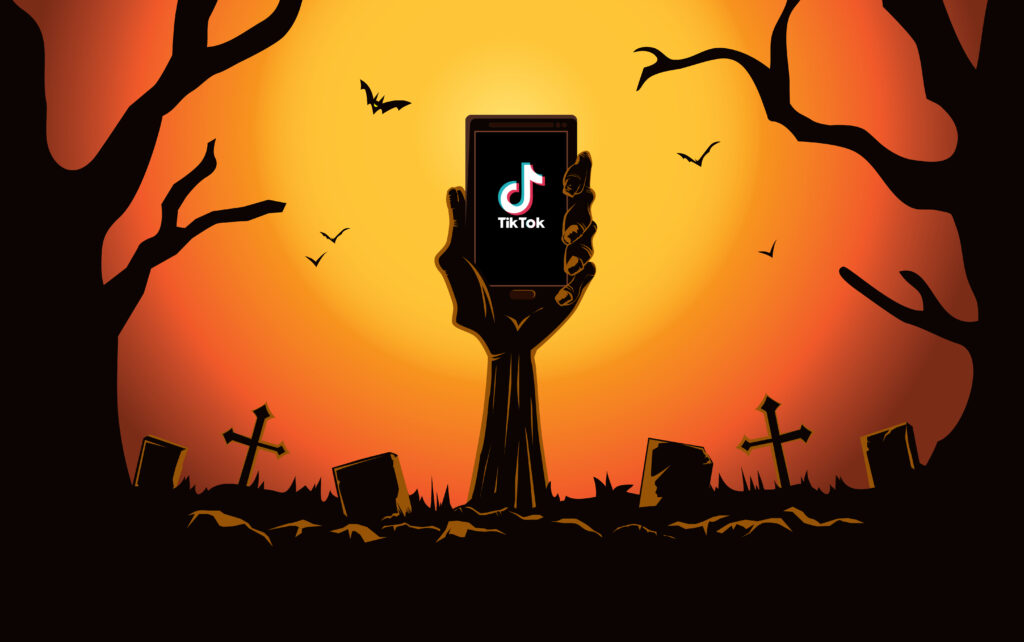For many advertisers and agencies, returning to TikTok this week felt a bit like remote working through a natural disaster: Business as usual, except not really.
Several agency sources told AdExchanger that many of their clients – or even all, in some cases – are already back running ads on TikTok again, especially those with businesses that depend on the platform.
But now that everyone knows firsthand what a ban would actually look like, that bell can’t be un-rung.
“It feels different, because we now have such an acute awareness that our contingency plans may be very real plans,” said Davitha Tiller, head of social and integrated communications at Havas.
Still, many clients remain “super jazzed and super optimistic about TikTok,” said one ad agency VP, who asked to remain anonymous in order to speak freely. “The prevailing perspective is: There’s a bump in the road, but not panic.”
Between when the TikTok ban was signed into law in April and when it was set to go into effect on Jan. 19, agencies and their clients had plenty of time to figure out how best to build their backup plans.
For a lot of brands, this involved reviewing paid media spend, updating influencer contacts, gathering and preserving TikTok data and securing presences on other channels if needed.
Not surprisingly, most advertisers have leaned towards the familiar.
Channels like Instagram Reels and YouTube Shorts, for example, are already performance drivers for many brands. There’s also been renewed interest in ad buying on Pinterest, Reddit, Snap and Spotify, and even some very early conversations about RedNote – a Chinese-language social app that Amercian TikTok users unexpectedly signed up for in droves last week – as an organic branded outlet.
According to Sean Clayton, CEO and co-founder of Myosin Marketing, most of his agency’s clients were already getting better performance results from Google, Facebook and Instagram than on TikTok, because it’s easier to create more sustainable communities within those ecosystems.
“You don’t build a lot of brand loyalty and brand advocacy and TikTok – it’s like a quick hit,” said Clayton. “It’s more chasing the trends than it is actually building a long-term, sustainable brand using social media.”
Some brands, however, have been able to tap into more responsive communities on TikTok and planned to follow those users and creators to other platforms. This meant being a agile in the moment – especially when TikTok returned unexpectedly.
“We’ve seen so many brands activate reactively on Instagram, posting their favorite TikTok moments from over the years,” Tiller said. “And even as they were doing that, that’s when the platform came back.”
You came back different
On the dawn of the final day – Jan. 19 – some brands paused their existing campaigns ahead of time or even moved their ad spend elsewhere entirely. Others, meanwhile, took what one might think of as a “till-the-wheels-fall-off” approach and chose to wait it out.
No one, however, seemed to expect how quickly the platform would disappear and then reappear – almost like a switch flipping off and on, said Ross Martin, president of independent full-service agency Known.
“That was, for many brands, terrifying to see,” Martin said. “And it reinforced the power of the platform, which is really hard to fathom unless it’s taken away from you.”
Now that TikTok’s back, there are conflicting reports about how the brief closure may have impacted the ad buying experience.
Some media buyers say the platform has been glitchy and that the algorithm is acting strangely, which could affect targeting. Others say they haven’t noticed any technical changes at all, but that the mood of the app feels very different as users share their relief and confusion.
Performance metrics – or the lack of them – tell a similarly contradictory tale.
Most of the sources AdExchanger spoke with said it’s too soon to know whether the brief shutdown has impacted the performance of current campaigns, although Clayton said he’s noticed a sharp increase in followers on his own account and in engagement across the app overall.
Live data from ecommerce insights platform MikMak suggests that, at least among its own customer base, 7% of paid media traffic is currently coming from TikTok – back up to pre-shutdown levels, but nowhere near the 2024 average of 25% to 30%.
Another commerce data platform, Charm.io, told Digiday that total sales volume on TikTok Shop increased by $5 million in the seven days leading up to the shutdown, and an additional $500,000 on the day the platform came back.
That data seems to jibe with the pronounced vibe shift on the platform itself, where users are eager to get back to scrolling and shopping.
“There’s a real appreciation that it’s back,” Martin said, “and there’s a lot of hope and optimism that this means it’s here to stay.”
But will that hope last?
Being stuck in app store limbo means that user growth on TikTok might begin to stagnate. It may even decline, if the platform’s recent Trump-supportive messaging inspires another politically motivated social media exodus à la Meta and X.
So far, however, agencies and their clients don’t seem worried.
TikTok has elicited strong love from its user base up to this point, and fewer people – including ad buyers themselves – seem to be responding with the same levels of outrage as they did in past news cycles, noted the aforementioned anonymous agency VP.
“You got Bezos next to Zuckerberg [at the Trump inauguration],” they said, “and you don’t see people going, ‘Ah, screw it. I’m not going to use Amazon.’”
But once you’ve seen The Matrix for what it is, you can’t go back. Some TikTok users are starting to think more about their content and communities as separate from the platform itself.
“They’re beginning to question TikTok’s goals,” said Katie Secret, EVP and global head of marketing of Outbrain. Although not affiliated with an agency, she said she’s been having similar conversations with publishers about how to tackle the fragmentation that comes with managing a diversified social media presence.
“It’s healthy for brands, publishers and consumers to have scrutiny about how the various content on that platform is being served and managed, and whether it’s coming from a source that is a publication or an entity that they can trust,” Secret added.
Even if TikTok shuts down for good next time, most agencies feel there won’t be another bout of all-hands-on-deck, the-sky-is-falling hysteria – not if they’re agile enough to pivot, or large enough not to take too big a hit.
Which means that, as always, it’ll be small businesses and individual creators that suffer the most in a TikTok-free world.
“When you’re watching pundits talk about the merits of TikTok, it can seem like an academic conversation or a philosophical conversation,” said Martin. “But there’s nothing academic or philosophical about it for brands and creators who are counting on that for business imperatives.”















